You must be logged in to post a review.
Tomás de Zumalacárregui – 1834
€89.00
Figure to assemble and paint
Ref.: 11 – GE
Weight: 240 grs.
Material: White Metal
Number of Pieces: 15
Historical Review:
Tomás de Zumalacárregui Imaz; Ormáiztegui, Guipúzcoa, 1788 – Cegama, Guipúzcoa, 1835. Spanish military. He participated as a volunteer in the War of Independence, at the end of which he achieved the rank of captain. A supporter of absolutism, in 1823 he was part of the military organization in charge of repressing political crimes. In 1829, with the rank of colonel, he was military governor of El Ferrol, but, involved in the events of La Granja, he was accused of disaffection and lost his position. After the death of Fernando VII (1833) he joined the Carlist forces; He was named acting commander general of Navarra and went on to lead a powerful army. At first he based his actions on guerrilla fighting, avoiding open field battles, but in the last months of 1834 he accepted direct combat, which resulted in important victories. He extended his rule to all of Navarra and went on to fight against the liberals in Vizcaya and Guipúzcoa. Zumalacárregui intended to take Vitoria and march on Madrid, but Don Carlos ordered him to attack Bilbao; He died as a result of a wound sustained in the siege of this city.
In the political struggles of the reign of Fernando VII he was notable for his anti-liberal stance, he collaborated with the royalists and was promoted to colonel. When the succession dispute arose when the monarch died, Zumalacárregui participated from Pamplona in the uprising of the reactionaries who supported the infante Carlos María Isidro in defense of monarchical absolutism (1833).
After the pronouncement in the city failed, Zumalacárregui withdrew to the interior of the province, where he unified the Navarrese Carlist forces and organized one of the most effective contingents of the rebel army. During the First Carlist War that then began (1833-40), Don Carlos entrusted him with command of his forces in Navarra and promoted him to general. He resisted all attempts to attract him to Isabel II’s side, by his own brother Miguel and his former boss, General Quesada.
Aware of his numerical and armament inferiority, Zumalacárregui reproduced the guerrilla tactics he had known since the War of Independence, taking advantage of the rugged terrain and the support of a large part of the civilian population. He was very popular with his troops (who nicknamed him Uncle Tomás), but he did not hesitate to be cruel in his repression of the liberals or to use terror to keep the territory under control.
During 1834 he won successive victories in small skirmishes (such as the battles of Alegría and Amézcoas), to the point of causing Rodil to resign as commander of the enemy army. Encouraged by these successes and by the need to obtain money and international support, Don Carlos ordered him to take Bilbao the following year, despite the contrary opinion of Zumalacárregui (who would have preferred to attack Vitoria).
The operation began successfully, as the march towards Bilbao began, defeating Espartero at Durango. Later, now in control of most of the Basque Provinces, he laid siege to the Biscayan capital, but in his efforts to personally reconnoitre the enemy fortifications and the positions of his men, he was hit by a shot from the army defending Bilbao.
Wounded in the leg, Zumalacárregui went to his village to see a trusted healer and died, probably of septicaemia. The Carlist army thus lost its most prestigious soldier, considerably weakening its chances of success in the battle and opening up strong political dissensions within the army. With him disappeared not only the main battering ram for the cause of the prince, which was to have a decisive influence on the development of the First Carlist War, but also a type of hero or leader deeply identified with the common people, as portrayed by Galdós in one of his most famous National Episodes.
The chronicles tell of the great sobriety with which Zumalacárregui dressed. The figure wears the simple uniform of a general in summer, unembroidered coat and white trousers with gold braid. It is played with the traditional Basque beret of the Carlist troops. On his chest, on the left side, he wears the Cross of the Royal Military Order of Saint Ferdinand.

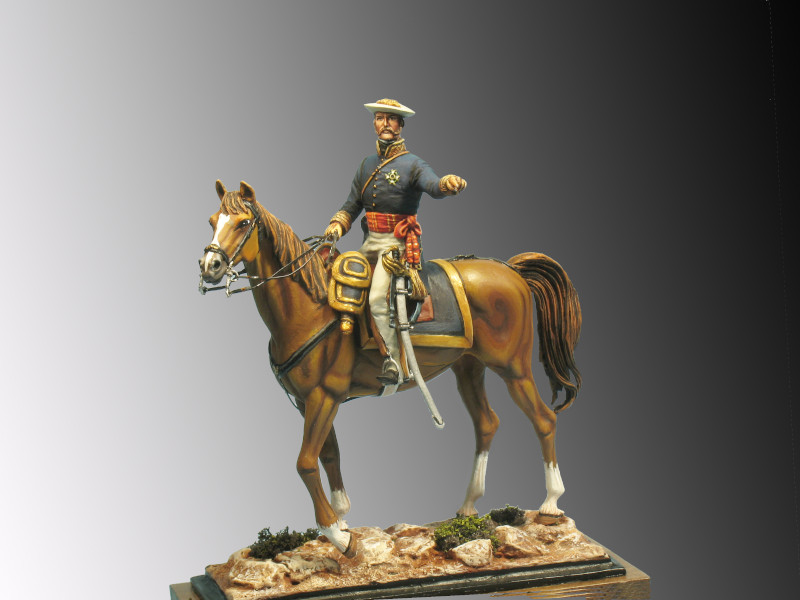
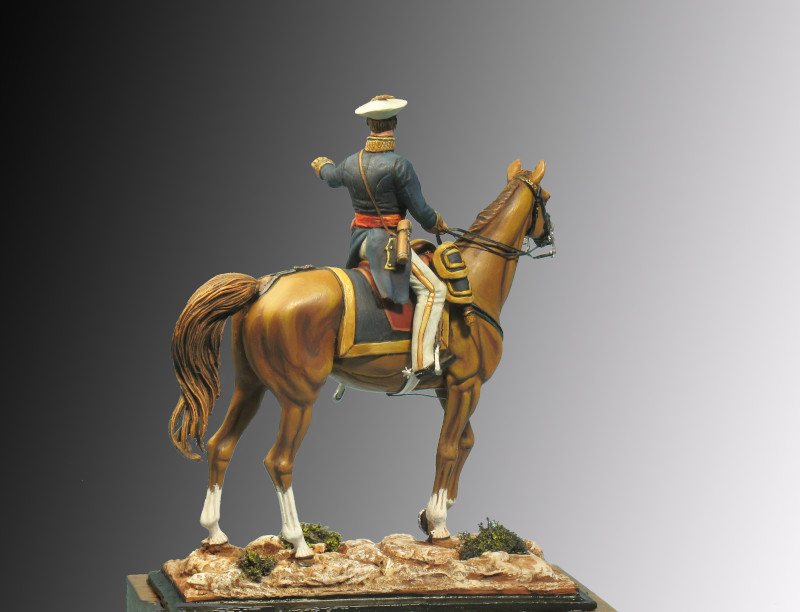


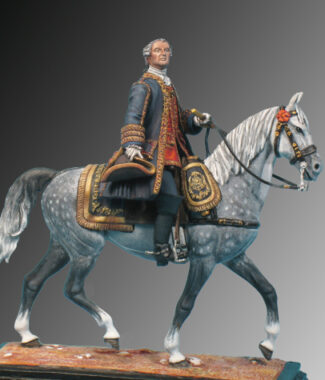
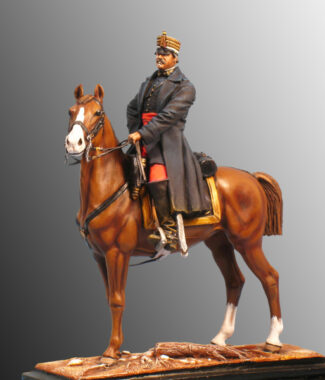
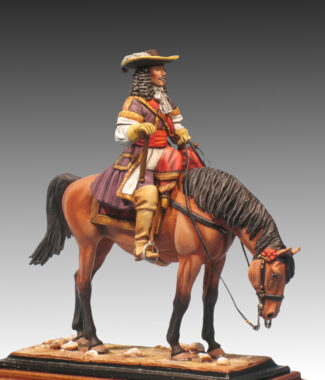
Reviews
There are no reviews yet.